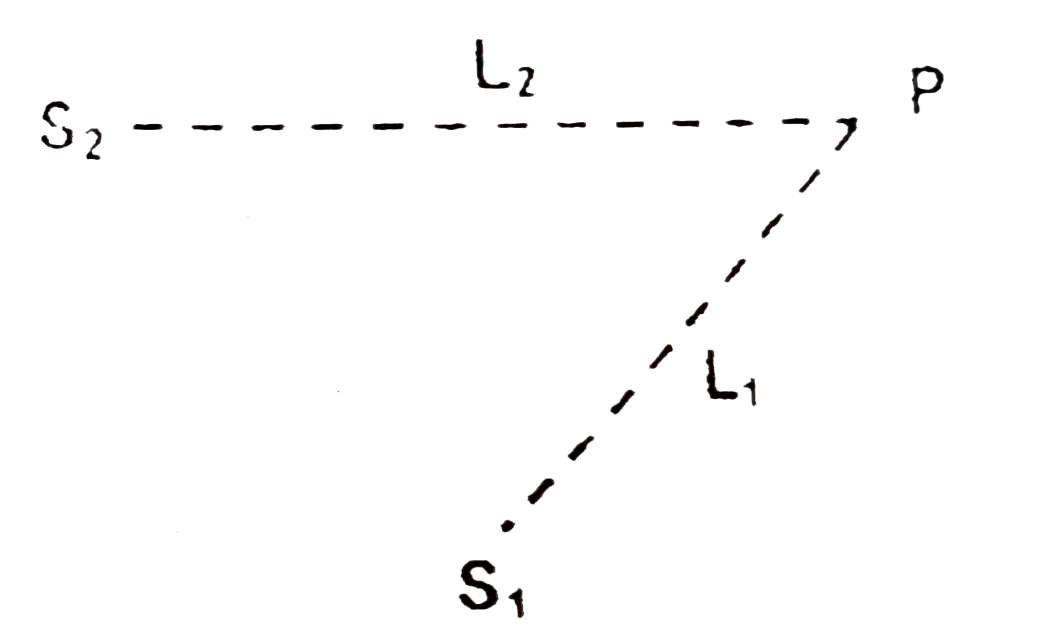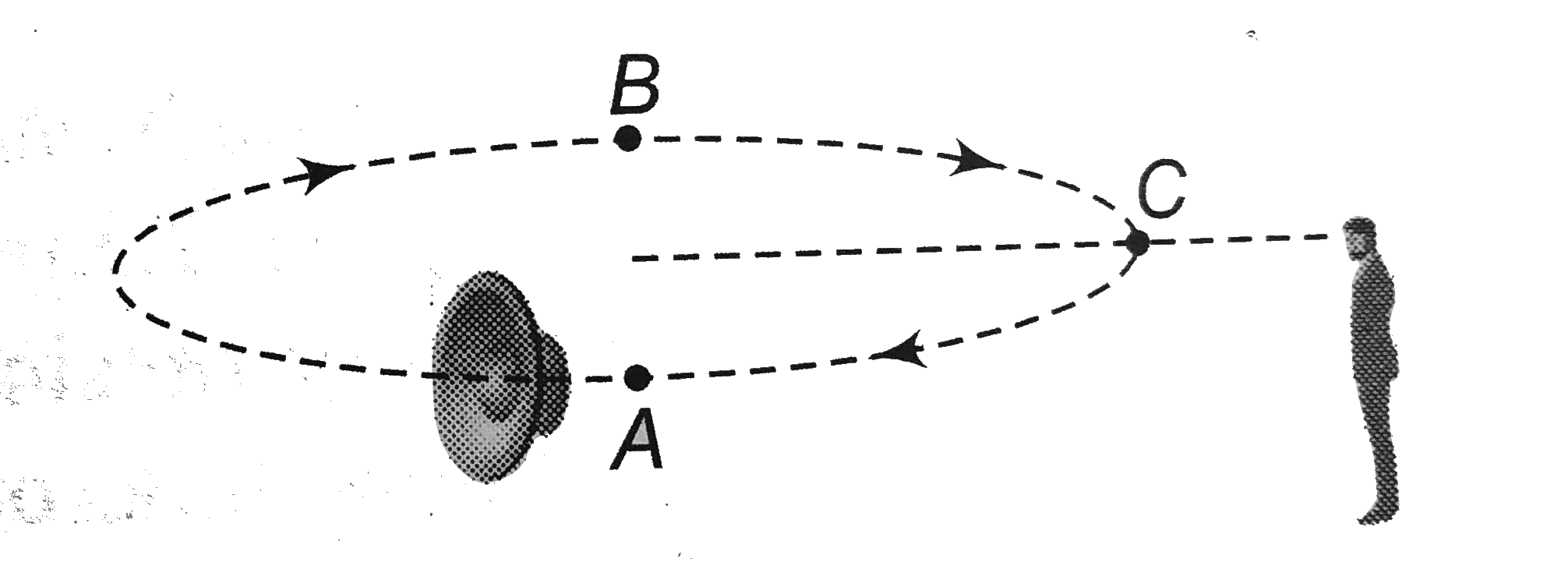Two sound sources shown in the figure vibrate in phase. By moving S1 along PS1 consecutive minima are heard when L1−L2 has values, 20cm, 60cm and 100cm. What is the frequency of sound source if the speed of sound is 340m/s?

280Hz
330Hz
850Hz
440Hz
The minima will be heard at P when a crest from S1 and a trough from S2 reach there at the same time. This will happen if L1−L2 is λ/2 or λ+(λ/2) or 2λ+(λ/2) and so on. Hence the increase in L1 between consecutive minima is λ, and from the data we see that λ=0.40m. Then from λ=v/Arrf−340/0.40=850Hz
Similar Questions
In an organ pipe the distance between the adjacent node is 4cm. Find the frequency of source if speed of sound in air is 336m/s.
View SolutionWhat is the fundamental frequency of an open organ pipe of length 42.5 cm, if the velocity of sound in air is 340 m/s?
View SolutionCalculate the beat frequency heard when two sound sources of wavelength 35cm and 35.2 cm are sounded together. The speed of sound in air is 330 ms−1
View SolutionIn Quincke's experiment the sound detected is changed from a maximum to a minimum when the sliding tube is moved through a distance of 2.50 cm. Find the frequency of sound if the speed of sound in air is 340ms−1.
View SolutionCalculate the frequency of 2nd harmonic in an open organ pipe of length 34 cm if the velocity of sound is 340m/s.
View Solutiona bus is moving towards and stationary observer with speed 20 m/s blows a horn of frequency 200 Hz. the frequency of sound heard by the observer is approximately ( take speed of sound 320 m/s)
View SolutionA closed organ pipe can vibrate at a minimum frequency of 500 Hz. Find the length of the tube. Speed of sound in air =340ms−1.
View SolutionTwo sound waves of wavelengths 98cm and 100cm arrive at the same point,from two different source.The number of beats heard (per second) is (speed of sound is 392m/s)
View SolutionFind the fundamental, first overtone and second overtone frequencies of an open organ pipe of length 20 cm. Speed of sound in air is 340ms−1.
View Solution
A small source of sound moves on a circle as shown in the figure and an observer is standing on O. Let n1,n2 and n3 be the frequencies heard when the source is at A, B and C respectively. ThenView Solution

